The XRISM mission, led by JAXA with support from NASA and ESA, is providing new insights into the Universe through X-ray imaging of galaxy clusters and supernova remnants, marking a significant advancement in cosmic exploration.
Invisible to our eyes, X-rays emitted by the hot gas that fills much of the Universe can shed light on many cosmic mysteries. The ‘first light’ observations of this gas by JAXA’s X-Ray Imaging and Spectroscopy Mission (XRISM) are now ready. They demonstrate that the mission will play a big role in unveiling the evolution of the Universe and the structure of spacetime.
XRISM’s first test images show a cluster of galaxies and a supernova remnant – the husk left behind when a massive star explodes. What’s more, XRISM has measured the energy of incoming X-rays from the supernova remnant to reveal the chemical elements contained within it.
The observations showcase the extraordinary capability of XRISM’s two science instruments. They were made during the mission’s ‘commissioning phase’ – when engineers carry out all the tests and checks needed to make sure the spacecraft is working as well as possible.
X-ray images of the cosmos are special. They look very different to the images we are used to seeing in visible and infrared light, such as those from the James Webb and Hubble Space Telescopes. They also convey unique information about the Universe’s most dramatic phenomena, as X-rays are a very high-energy type of light emitted in the hottest and most violent events.
XRISM is a collaboration between the Japan Aerospace Exploration Agency (JAXA) and NASA, with significant participation from ESA. In return for providing hardware and scientific advice, ESA is allocated 8% of XRISM’s available observing time.
“It’s so exciting to see XRISM already carrying out such marvelous scientific observations, even though it is not yet fully calibrated,” says ESA Director of Science Carole Mundell. “It shows the potential this mission offers to our science communities for groundbreaking discoveries in the study of the most energetic phenomena in the Universe.”
“I congratulate the engineering teams at JAXA, ESA, and NASA for reaching this important milestone.”
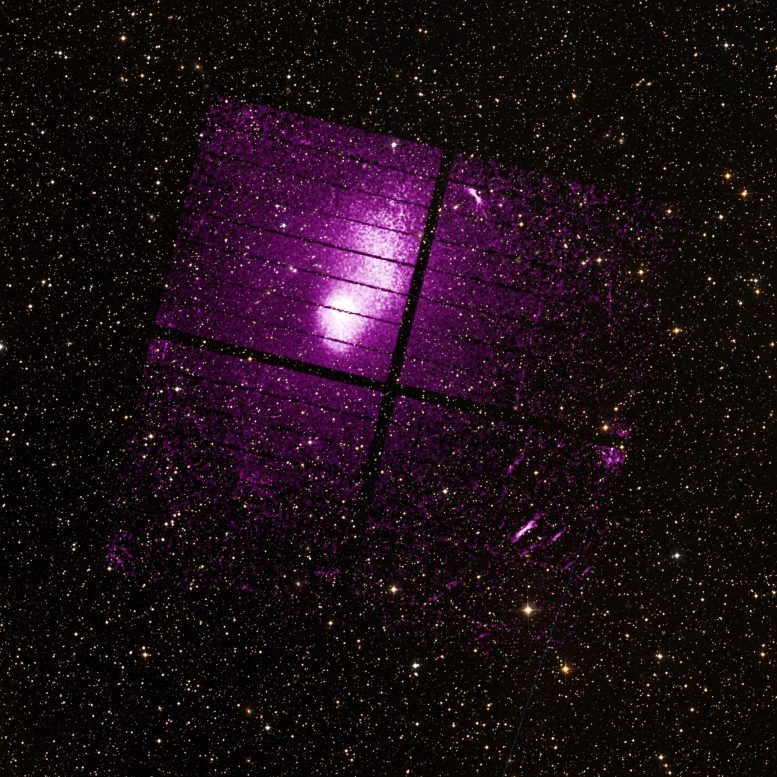
XRISM’s Xtend instrument captured galaxy cluster Abell 2319 in X-rays, shown here in purple. The background is a ground-based image showing the area in visible light. Credit: JAXA/NASA/XRISM Xtend; background, DSS
Galaxy Cluster Abell 2319
This pioneering image is a wide view of a nearby cluster of galaxies called Abell 2319. In purple we see X-ray light from million-degree gas that permeates between the galaxies in the cluster. Observing this gas helps astronomers measure the total mass of the galaxy cluster, revealing information about the birth and evolution of the Universe.
XRISM’s observations of galaxy clusters will also provide insight into how the Universe produced and distributed the chemical elements that we find on Earth today. The hot gas found within clusters is a remnant of the birth and death of stars over billions of years. By studying the X-rays emitted by the gas, XRISM will discover which ‘metals’ (elements heavier than hydrogen and helium) it contains and map how the Universe became enriched with them.
This image of Abell 2319 was taken with XRISM’s Xtend instrument, which uses a CCD camera to image extended X-ray emitting objects and their surroundings. Xtend’s unique ability to capture the entire cluster in a single shot promises a significant step forward in our understanding of the large-scale structure of the Universe.
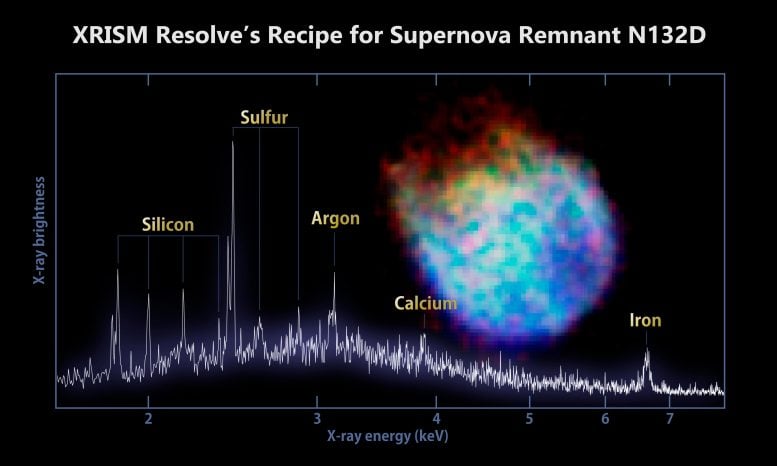
XRISM’s Resolve instrument captured data from supernova remnant N132D in the Large Magellanic Cloud to create the most detailed X-ray spectrum of the object ever made. The spectrum reveals peaks associated with silicon, sulfur, argon, calcium, and iron. Inset at right is an image of N132D captured by XRISM’s Xtend instrument. Credit: JAXA/NASA/XRISM Resolve and Xtend
Supernova Remnant N132D
This colorful shot shows the remains of a massive star exploding in the nearby Large Magellanic Cloud. The different colors indicate different energies of X-ray light, with red being lowest energy and blue being highest energy.
Using its Resolve instrument, XRISM could complement the image of the supernova remnant taken by Xtend (top right) with a super-sharp view of the chemical elements that exist within N132D. This allows scientists to work out where exactly in the supernova remnant each element can be found.
XRISM can identify each element by measuring the specific energy of X-ray light that it emits. The graph above shows separate spikes that were previously indistinguishable; this sets the stage for new insights into the formation and distribution of elements in the Universe, which form the basis of stars, planets, and life itself.
Resolve’s unique design also enables us to explore the temperatures, densities, and motions of the hot X-ray emitting gas in this supernova remnant in more detail than ever before. This reveals how exactly the remnant interacts with its surroundings, as well as the nature of the explosion that created the remnant in the first place.
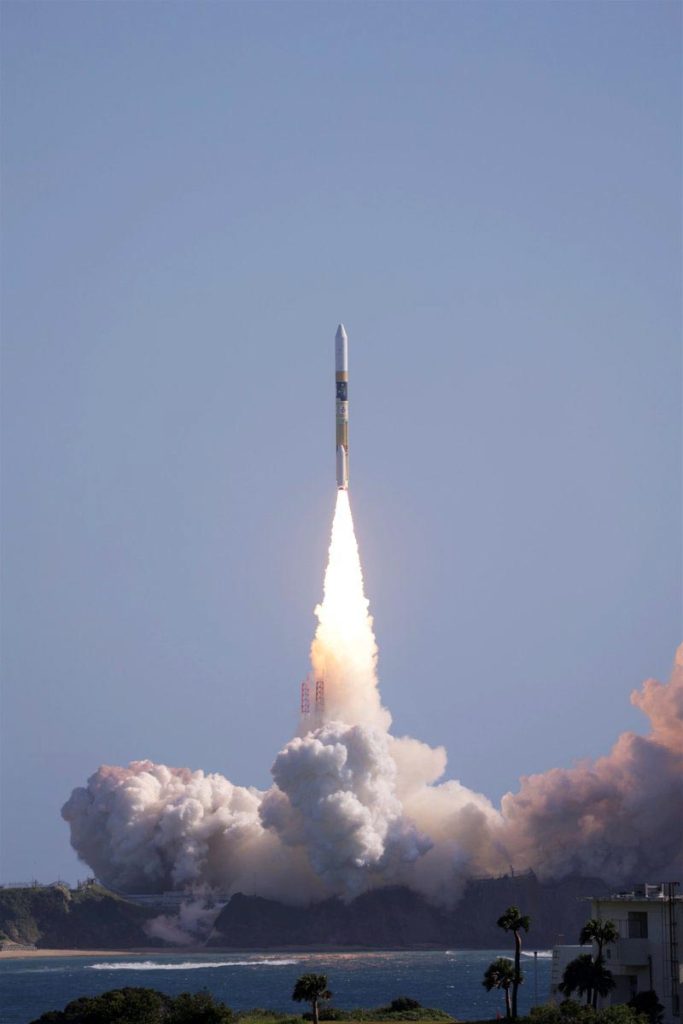
The Japan Aerospace Exploration Agency’s (JAXA) X-Ray Imaging and Spectroscopy Mission (XRISM) lifted off on a H-IIA rocket from the Tanegashima Space Center in Japan at 08:42 JST / 00:42 BST / 01:42 CEST on September 7, 2023. The successful launch marks the beginning of an ambitious mission to explore the growth of galaxy clusters, the chemical make-up of the Universe, and the extremes of spacetime. Credit: JAXA
What Has JAXA Been up to Since Launch?
XRISM launched on September 6. Since then, JAXA engineers and scientists have been working hard to get the telescope ready for science. This included switching on and testing out XRISM’s two instruments, Xtend and Resolve.
The spacecraft is currently in very good condition. Checks on onboard systems such as those that control the power supply, the orientation of the spacecraft, and the communication with Earth confirm that they work as planned. Hardware provided by ESA was tested early in the commissioning phase and is all working as expected.
The Xtend instrument is working excellently. The Resolve instrument is also working very well. Its energy resolution – the key scientific performance indicator – is even exceeding requirements. However, engineers have not yet managed to open a filter covering the detector, designed to protect it before and during launch. Efforts are ongoing to fix the issue, but the XRISM team has decided that planned scientific observations should assume that the filter will remain in place. The N132D energy spectrum demonstrates that groundbreaking science can still be achieved.
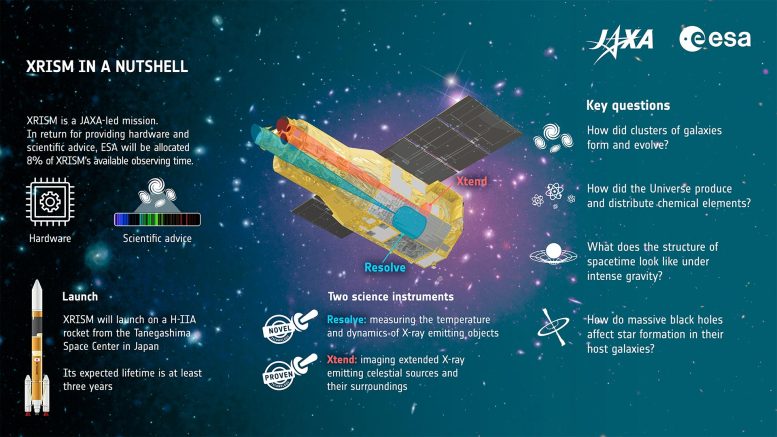
XRISM will study the Universe in X-ray light with an unprecedented combination of light collecting power and energy resolution – the capability to distinguish X-rays of different energies. The mission will provide a picture of the dynamics in galaxy clusters, the chemical make-up of the Universe and the flow of matter around accreting supermassive black holes (Active Galactic Nuclei or AGN), among many other topics. Credit: ESA
What’s Next?
The spacecraft commissioning phase will be finished by the end of January. In February, JAXA will start calibrating the instruments and demonstrating their capabilities.
The observing time allocated to ESA, as part of a public observing program open to scientists all over the world, will enable European scientists to seize the extraordinary scientific opportunities offered by the unprecedented high-resolution spectroscopic capabilities of Resolve. Scientists have already been invited to submit proposals for observations that they would like to make starting from August 2024. The deadline is April 4, 2024.
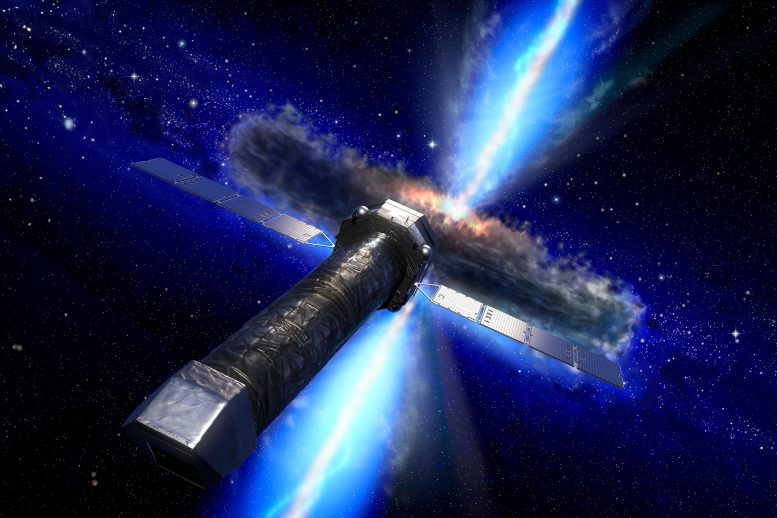
By combining a large X-ray telescope with state-of-the-art scientific instruments, Athena will address key questions in astrophysics, such as: How and why does ordinary matter assemble into the structures (galaxies, galaxy groups and galaxy clusters) that we see today? and How do black holes grow and shape their environment, as well as the cosmological evolution of the galaxies hosting them? Credit: ESA
“These first light images demonstrate that XRISM is fulfilling its promise of opening a new era in high-resolution imaging spectroscopy of hot gas in the Universe,” says ESA XRISM Project Scientist Matteo Guainazzi. “I warmly encourage scientists in ESA Member States to seize the unique opportunities offered by XRISM, by submitting proposals to observe using this magnificent telescope.”
Observations made using XRISM will complement those from ESA’s XMM-Newton X-ray telescope, and will be an excellent foundation for observations planned with ESA’s future large-class mission NewAthena. The latter is being designed to significantly exceed the scientific performance of existing spectroscopic and survey X-ray observatories.



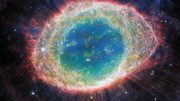

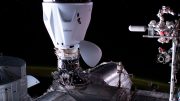
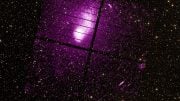

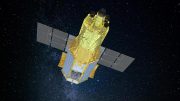

Be the first to comment on "First Light: How XRISM Is Changing Our X-Ray View of the Cosmos"